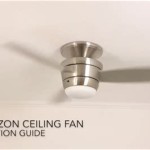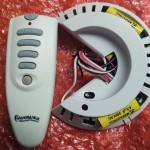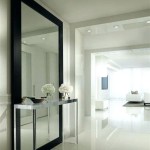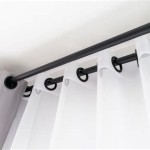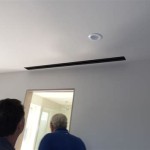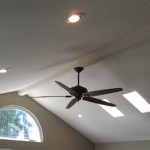What Is a Suspended Ceiling Made Of in Construction?
Suspended ceilings, also known as drop ceilings or false ceilings, are a common feature in modern buildings. They are constructed below the main structural ceiling, creating a void space between the two. This space can be used for various purposes, such as housing electrical wiring, plumbing, and ventilation systems. Suspended ceilings offer numerous advantages, including improved aesthetics, enhanced acoustic control, and easier access for maintenance. The materials used in their construction play a crucial role in determining their overall performance and longevity.
1. Ceiling Grid System
The foundation of a suspended ceiling is the grid system, which provides the supporting framework for the ceiling panels. These grids are typically made of lightweight metal, such as galvanized steel or aluminum. The most common types of grid systems include:
- T-Grid: This classic grid system features a series of T-shaped metal profiles that intersect at right angles, forming a grid pattern. The T-grid is versatile and widely used for both commercial and residential projects.
- Main Tee Grid: Similar to the T-grid, the main tee grid utilizes wider T-shaped profiles for greater strength and support. It is often preferred for larger spans or heavier ceiling panels.
- Lay-in Grid: This type of grid system features a series of U-shaped profiles that interlock to create a grid pattern. The lay-in grid is favored for its ease of installation and flexibility in panel placement.
- Concealed Grid: This grid system is designed to be hidden from view, resulting in a seamless and more aesthetically pleasing ceiling appearance. The concealed grid is typically used in applications where a clean, minimalist look is desired.
The choice of grid system will depend on factors such as the ceiling area, load requirements, and desired aesthetics. The grid system is typically attached to the structural ceiling using hangers, which are metal brackets or wires that provide secure suspension.
2. Ceiling Panels
Ceiling panels are the visible elements of a suspended ceiling, providing the finished appearance. They come in a wide variety of materials, each with its own unique characteristics and advantages. Some common ceiling panel materials include:
- Mineral Fiber: Mineral fiber panels are made from a mixture of mineral fibers, such as glass fibers or gypsum fibers. They are lightweight, fire-resistant, and relatively inexpensive. Mineral fiber panels are available in various finishes, including textured, painted, and acoustical.
- Gypsum Board: Gypsum board panels are similar to drywall but are specifically designed for use in suspended ceilings. They offer excellent fire resistance and sound absorption properties. Gypsum board panels are available in various thicknesses and surface finishes.
- Metal: Metal ceiling panels are made from materials such as aluminum, steel, or copper. They are durable, moisture-resistant, and offer a variety of aesthetic options, including different finishes and colors. Metal panels can be perforated or textured for enhanced acoustic control.
- Wood: Wood ceiling panels are often used for their aesthetic appeal and natural warmth. They are available in various species, finishes, and sizes. Wood panels can be used to create a variety of ceiling designs, from traditional to modern.
- Acoustic Panels: Acoustic panels are designed specifically to absorb sound and reduce noise levels. They are often made from materials such as fiberglass, mineral wool, or foam. Acoustic panels are available in various shapes, sizes, and finishes to meet specific acoustic requirements.
The choice of ceiling panel material will depend on factors such as budget, desired aesthetics, required fire resistance, and acoustic performance.
3. Additional Components
In addition to the grid system and ceiling panels, suspended ceilings may also incorporate various additional components to enhance their functionality or aesthetics. These components include:
- Lighting Fixtures: Suspended ceilings provide a convenient platform for mounting lighting fixtures. The lighting fixtures can be integrated into the ceiling panels or suspended separately using hangers.
- Diffusers: Diffusers are used to distribute air from ventilation systems evenly throughout the space. They can be integrated into the ceiling panels or installed separately.
- Access Panels: Access panels are removable sections of the ceiling panels that provide easy access to the void space above the suspended ceiling. They are useful for maintenance, repairs, and inspections.
- Fire Sprinkler Heads: Fire sprinkler heads can be incorporated into suspended ceilings to provide automatic fire suppression. The sprinkler heads are typically recessed into the ceiling panels for a clean and unobtrusive appearance.
These additional components can be chosen based on the specific needs and requirements of the project. The proper selection and installation of these components are essential for ensuring the functionality and performance of the suspended ceiling.

A Typical Suspended Ceiling Components 13 B Back Bracing Scientific Diagram

What Are The Types Of Suspended Acoustic Ceilings 9wood

What Is A Suspended Ceiling And Are The Benefits

False Ceiling Problems In Buildings Envista Forensics

Isolated Suspended Ceilings Mason Industries

Fixed Ceiling Vs Suspended Ny Engineers

Suspended Ceilings Acoustic Ceiling Tiles Panels Archtoolbox

A Basic Guide To Suspended Ceiling Grids Tiles

Choosing The Right Suspended Ceiling Guides Archiexpo

Suspended Ceiling Installation Ceilings
Related Posts


